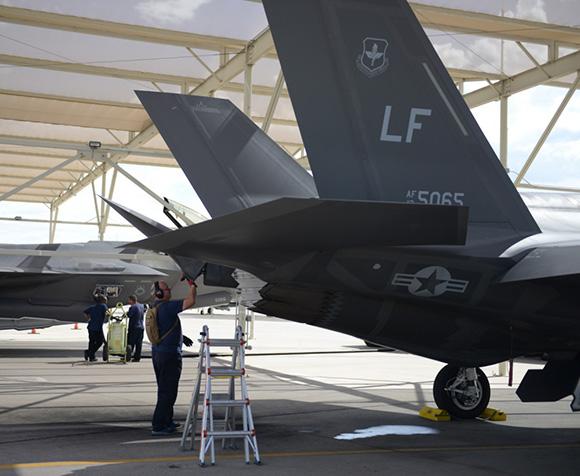On the F-35 there are 276 deficiencies in combat performance. This is what we learn from the last report, published a few hours ago, signed by Michael Gilmore, director of operational tests and responsible for the evaluation of weapons systems for the Department of Defense.
The report also underlines the progress, as in the resolution of the problems concerning the ejection seat, however Gilmore outlines a worrying picture in view of serial production and Initial Operational Capacity for the Air Force.
"Despite the latest implementations, 276 deficiencies in combat performance have been identified. The new 3FR6 software will solve less than half of the shortcomings".
The 3FR6 Block is the most recent of the software released to run the tests. The report notes that "significant well-documented deficiencies were found resulting in overall ineffective operational performance. Hundreds of shortcomings will not be adequately addressed with corrections and corrections verified with flight tests within the development and demonstration system".
"Although the conclusion of the current development and demonstration phase is fixed at the 2017, there is not enough time to correct these fundamental shortcomings, nor the time to verify the corrections in test flights".
Gilmore fears that due to delays accumulated by the program, corrections could only be made in the laboratory and not tested on real flights. This - says Gilmore - it is a huge security problem since the laboratories have shown that they do not represent the stability problems of the aircraft in a real context.
Among the 276 deficiencies, Gilmore pays special attention to the 25 mm cannon and diagnostic software Alis.

"While the ground tests have been completed for all the F-35 versions, only variant A has completed the initial phase of the tests. The latter revealed display problems for the pilot due to integration with the helmet sensors. There is a high probability of discovering further deficiencies in the next tests with the other versions of the main system, causing further delays".
ALIS or Autonomic Logistics Information System, continues to worry the director of operational tests and responsible for the evaluation of weapons systems for the Department of Defense. ALIS is the nerve center of the F-35 system: it allows pilots as well as ground supportive strength to take proactive actions to ensure the efficiency of the fighter in any operational theater. Since its development, ALIS has been called the backbone of the F-35 fleet. It is basically a hub used to plan missions, keep track of aircraft status, order spare parts. Unlike all the other aircraft, ALIS manages these operations daily, in a single hub in the world. All ALIS servers connect via land-based or satellite military networks. Obviously it does not use the internet. There is only one global server called Autonomic Logistics Operating Unit (ALOU). Each nation will have its own server, called Central Point of Entry (CPE). In turn, squadrons use a called server locally Standard Operating Unit (SOU).
ALIS works this way: the F-35 of a country X connects to the SOU that interfaces with the CPE. The latter stores the data and transmits the information to theAutonomic Logistics Operating Unit. Therefore, an optimal connection is essential. Each aircraft can lose its connection with its national server for up to 30 days. After this time, the fighter must be grounded. Once the connection is established, the SOU loads the data into the CPE. So there will be as many servers as there will be countries that will buy the F-35, but only one main hub in the world. ALIS has never been designed with a system of back-up. Fears therefore arise (in addition to the current instability of the system) for particular contexts in which energy losses could occur. This could limit fleet operations to 30 days from the last connection.

Although designed exclusively in primary form, ALIS should guarantee greater redundancy to the infrastructure (in a few years). However, in the event that ALIS should be offline, F-35 will be able to fly for no more than 30 days. ALIS does not restrict flight operations, but does not notify the ground teams of the actual status of the aircraft. Self offline, ground crews should do nothing but physically proceed, managing the entire supply chain of the fighter, as well as configuration, error diagnostics, mission planning and debriefing. For ALIS they are continuously developed and released service pack, however not yet able to guarantee the expected stability with “a high rate of false alarms and poor accuracy".
Gilmore (photo) concludes stating that "the current timing for the conclusion of the development phase is not realistic. The Pentagon's approach is to attempt a premature cessation of tests on mission systems, which will increase the risk of failures during intense combat tests and in a real operation".
According to Gilmore's latest projections, tests to assess combat performance should not be concluded before the 2020. The Air Force, on the other hand, wants to declare the Initial Operational Capacity for next August.
"The program would need an 550 million dollar supplement in the 2018 fiscal year to complete the necessary development required and implement additional software versions to correct and verify important known and documented shortcomings. Additional 425 million dollars in the fiscal year 2019 and 150 million dollars for the 2020. These estimates are in addition to an additional 1,125 billion needed to complete the SDD (System Development and Demonstration) phase".
(photo: US Air Force / US DoD)












